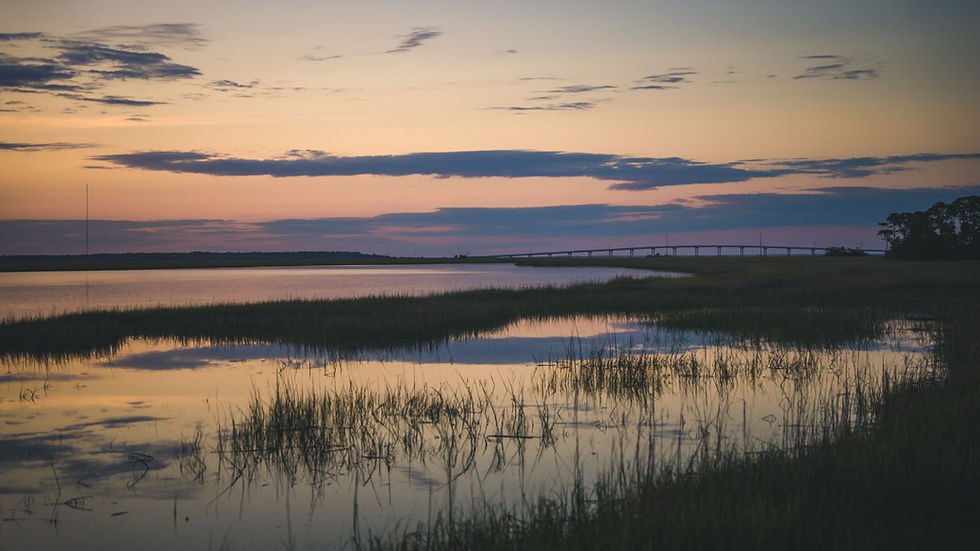Five reasons to visit San Sebastian you've probably never heard before
- Ashley Oñoz-Wright

- Jun 7, 2022
- 7 min read
Updated: Jul 20, 2023

Let’s talk about San Sebastian. We’re pretty convinced it’s one of the best places you’ve never heard of…unless of course, you’re a gourmand. Then it’s already on your bucket list. First things first: San Sebastian or Donostia, as the locals call it, is nothing like the rest of Spain. In fact, you won’t even feel like you’re in Spain, especially if you see the entire country through an Andalusian lens (let’s be honest, many do).
This fiercely independent region in northern Spain is Basque country and not only do they have their own flag, they have an entirely different language. There are no flamenco dancers, no Spanish guitars, no ornate tiles, no tapas or paella festivals, no Moroccan-style lanterns, heck - you probably won’t even hear Spanish unless you speak it first. In fact, San Sebastian feels a little more like France and the surrounding hillsides look a little more like Ireland.
It’s nothing like Madrid or Barcelona, which is what most people typically equate with Spain, and that’s exactly why you should visit. San Sebastian was our first stop on our Spanish road trip, and we’re so glad it was.
Here are five reasons to visit San Sebastian that you’ve probably never heard before.

1. You practically trip over Michelin starred restaurants and chefs in San Sebastian, Spain
Kokotxa - 1 michelin star
Amelia by Paulo Airaudo - 2 michelin stars
Arzak - 3 michelin stars
Martín Berasategui - 3 michelin stars
Akelaŕe - 3 michelin stars
Mugaritz - 2 michelin stars
Alameda - 1 michelin star
Elkano - 1 michelin star
San Sebastian, is a foodie mecca. As of 2022, the tiny seaside town in Spain had 16 Michelin stars in a 15 mile-radius (25 km). Pound-for-pound, it has one of the highest concentrations of Michelin stars per capita in the world. If you’re into the food scene in any way, shape, or form, you know this is a very big deal and reason enough to visit. But why are all these culinary heavyweights drawn to this region? That’s an easy one: because of its rich gastronomic pedigree and cultural connections to food.
One thing you’ll find in traditional Basque food is strong influences from the landscape. The windswept and rocky coastline is bordered by rolling green hills and farmland, making this area prime real estate for fishing, farming, foraging and gardening in their finest forms. Whew, that was a mouthful.
San Sebastian’s location on the turquoise Bay of Biscay means the seafood is plucked straight from those chilly waters and delivered almost immediately to the world-class restaurants. In fact, it's not uncommon to see those famed Michelin chefs choosing their own fresh market finds each week.
When you stroll through markets like the ones in San Sebastian and see people pouring over vibrant produce, artisan cheeses and other fresh ingredients, you know that food matters to them. The choices of ingredients, how they’re used and how they’re served are all deliberate. You experience what food could be, and what it is in this part of the world. That’s why there are so many celebrated and esteemed eateries in the region, because there is an unspoken level of admiration for ingredients, respect for the land and the sea, and a real-life romantic relationship with exquisite food.
And here’s why that matters in your life: If you’re just eating to stay alive, you’re missing out on one of life’s greatest pleasures. Ask yourself this question: Do you consciously think about what you’re eating? Labels with ingredients we can’t pronounce, artificial colors and flavors, sugar added, expiration dates that are a year down the road, catchy names that jump out at you from the shelves. We’ve given up a lot of quality in the name of convenience. San Sebastian will give you a chance to reawaken the conscious consumption part of yourself that has gone dormant.

2. San Sebastian is home to the oldest European culture still in existence
The Basque
In today’s episode of ‘Betcha Didn’t Know,’ we take a closer look at a couple of fascinating facts about the Basque culture around San Sebastian.
A study published in the Proceedings of the National Academy of Sciences in 2015, anthropologists discovered that the Basques are very likely the earliest inhabitants in all of Europe, even predating the Celts and the Romans. It’s widely believed that because of their geographic isolation from the rest of the continent, one side is the craggy coastline and the other, the sharp peaks of the Pyrenees Mountains, they were much harder to reach. This meant there was no mixing between tribes for thousands of years.
But Basque Country doesn’t just encompass Spanish territory, it also spreads to parts of France like Biarritz and Bayonne, although some will argue that the culture is a little more diluted on the French side of the border. The emerald green hillsides that surround the Basque region are exactly what you’d expect to see in the UK, but not quite what comes to mind when most people think of Spain. So that’s also what makes this region and culture so unexpected and unique.
Their language, called Euskera, is also the oldest known European language still in use today and it’s completely unrelated to any other language spoken in the world. Marked by distinct letter combinations like X’s and T’s and Z’s, it’s believed to be a derivative of an ancient language called Aquitani, spoken way back in 200 BC. How’s that for wild? Culture Trip even relayed a bit of local folklore that said the Basque language is so difficult to learn, the Devil himself tried so he could tell the people which of them he was taking back to Hell, but he gave up after seven long years because he just couldn’t understand it.

3. Because you’ve probably never had pintxos, a foodie staple in San Sebastian
Pintxos are the Basque version of tapas
Great food is the backbone of culture here, and most social interactions happen over a pint of local cider or wine and pintxos (pronounced peen-chose), the Basque version of tapas.
Picture this: a wide wooden bar that stretches the entire length of a cozy little restaurant, buried under the most mouth-watering foods that come in all shapes and sizes. Every surface of the bar is covered with culinary surprises like prized Cantabrian anchovies, briny sea urchin, salty cured ham and creamy cheese, soft and velvety octopus, oily anchovies and green olives, all pinned to a hunk of grilled or crusty bread.
Pintxos bars are like beehives, with people buzzing in and out, stopping at the tiered smorgasbord of goodies and then heading back to their table of friends. It’s a tour of textures as much as it is flavors. And the best part? Txikiteo is the Basque version of a food crawl but it’s between pintxos bars. For foodies, finding out it’s encouraged to eat a few delectable bites at every establishment is basically the equivalent of ecstasy (the state of euphoria, not the narcotic).

4. You will experience a sacred ritual dedicated entirely to the worship of food in San Sebastian
it’s called Txikiteo
Txikiteo (pronounced chee-kee-tay-o) is basically the Basque foodie version of a happy hour pub crawl…except these unassuming "pubs" are actually incredible restaurants that lure you in with the promise of interesting, creative and delectable bites. And boy, do they deliver.
Imagine milling about the cobblestone streets of Parte Vieja, the old town district in San Sebastian, you can taste the sea in the air and the heady smells coming from each of the restaurants, curling beneath your nose and beckoning you inside for a taste. Where do we sign up?
You wander from bar to bar eating a bite or two, tossing your crumpled napkin on the floor and washing it all down with the famed Txakoli or sagardoa, paying next to nothing for that mini feast, and then rinse and repeat at the place across the street. Since it’s common for dinner time to be around 9:00 in the evening, txikiteo is a perfect way to hold you over between lunch and that late-night supper. If that's not one of the better reasons to visit san sebastian, here's yet another.

5. You will taste local spirits you’ve never heard of, let alone can pronounce
Txakoli
Txakolina
sagardoa
About a half hour outside of San Sebastian, you’ll find Getaria. It’s where they make Txakoli (pronounced chock-oh-lee), a crisp and mildly fizzy white wine that is popular in the region and pairs perfectly with pintxos. Txakoli, or Txakolina as it’s sometimes called, is made from obscure Hondarrabi Zuri white grapes that are native to the region and thrive in the high altitude that frequently experiences frigid, misty precipitation. There are also some salty minerality notes in this wine, given that most of the vineyards in the region are close enough to the ocean to experience the sea spray.
As the world’s affinity for small-batch wines that most people have never heard of grows, and of course, as the spotlight continues to shine on the region’s chefs, Txakoli will continue to gain in popularity around the world. Even the way it’s consumed is unique. It’s poured from a distance, kind of like something you’d expect to see from a flair bartender, almost a foot above a flat-bottomed glass. The angle of the pour is said to increase the aeration in the young, acidic wine but if you pour from any higher and you may actually lose the effervescence.
And then there’s the local sagardoa or hard cider that’s been flowing in the Basque region for the last 800 years. Astigarraga is another place you’ve probably never heard of, but that’s going to change as these traditional Basque ciders become more well-known and exported around the world as it’s considered the region’s cider capital.
From January to April, cider houses or sagardotegi, open to the public with visitors standing shoulder to shoulder, waiting on the enormous wooden barrels to be tapped. The golden cider is naturally fermented and acidic, giving it more of a sour beer profile that lends itself to chugging more so than sipping. And just like Txakoli, it's poured from above. Megan Krigbaum of PUNCH put it best: “The cider should cascade from the bottle in an arc, hitting the bottom of the cup with such force that it splashes up the sides, resulting in a foamy white head. It is then consumed—not sip by sip, but in one giant anticipatory gulp.” It’s a fun and interactive experience you can’t replicate anywhere else. And isn’t that the whole point of why we travel?
More Things to Do in Europe

Ashley Oñoz-Wright has been a travel writer and editor based in Las Vegas, NV for the last nine years. Her work has been featured in Manifesting Travel, Modern Luxury, Sophisticated Living, Greenspun Media Group, Vegas.com and LasVegas.com. She holds a degree in Sociology & Anthropology from DePauw University.
















Comments